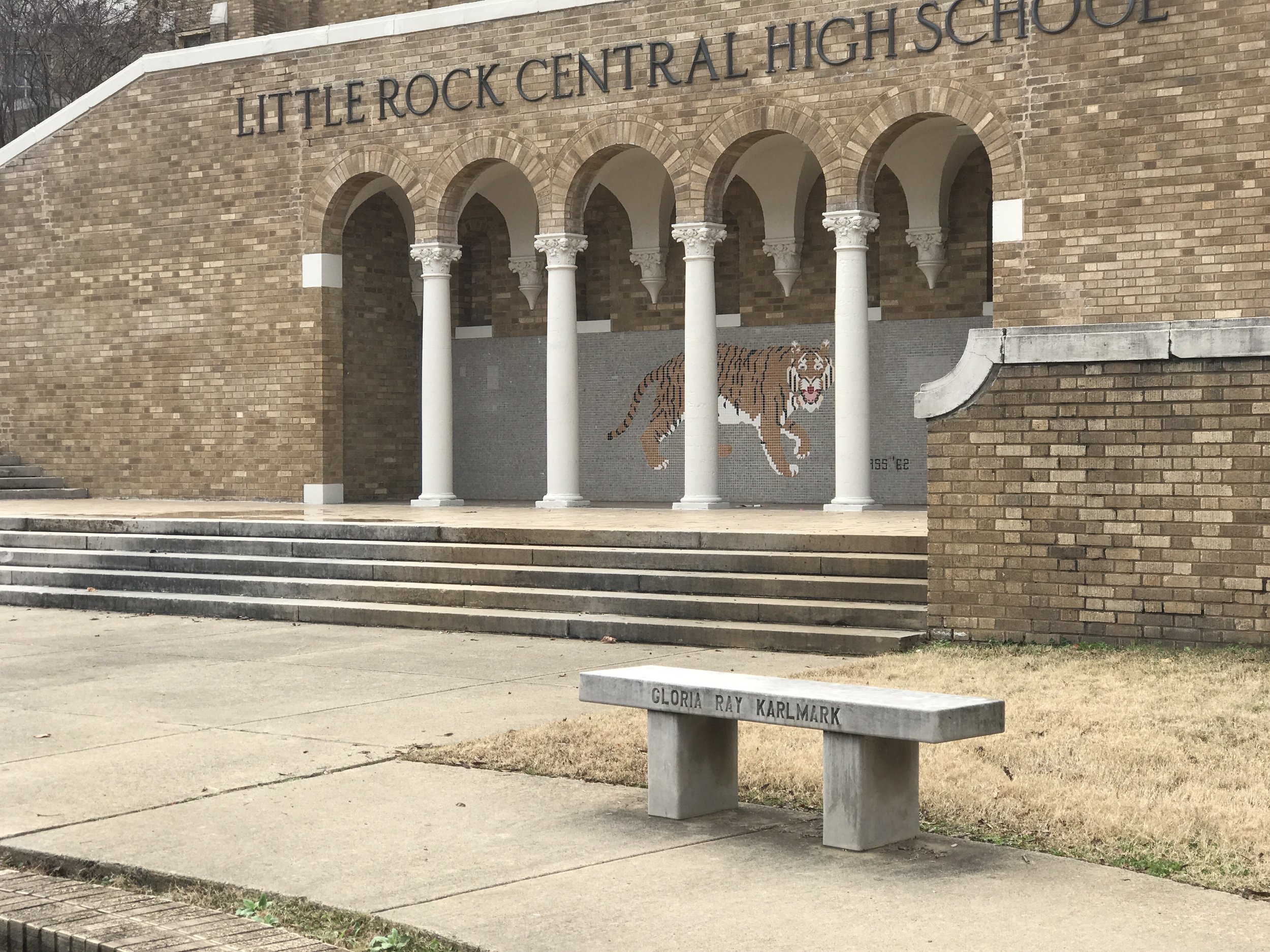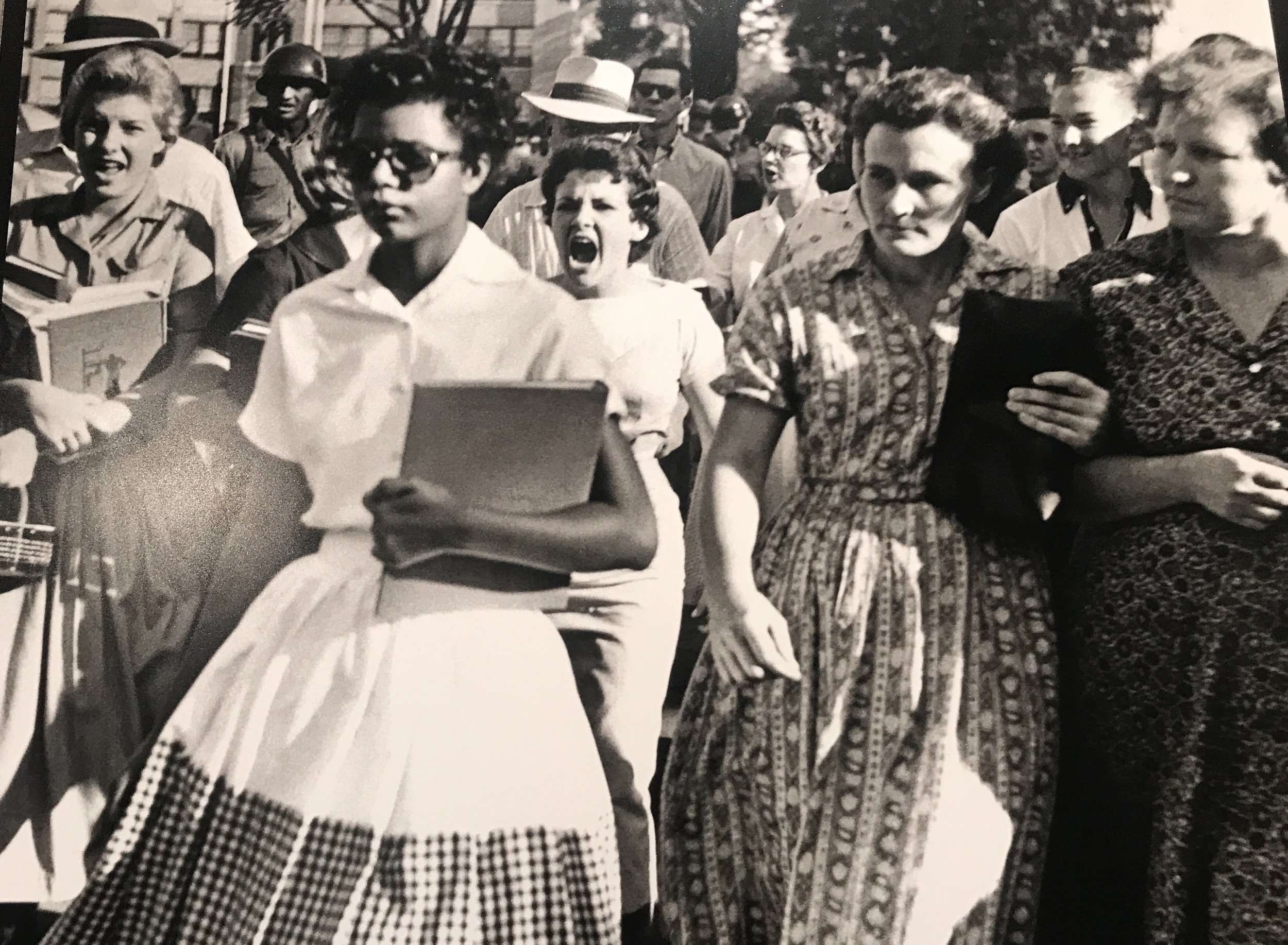

11. Little Rock
My generation of Davises grew up far from our Arkansas roots. We Holmeses were in New England; our cousins were in Iowa, Idaho, New Mexico and Virginia. But the children of Mabel and Oma Grier were committed to staying close-knit despite being scattered across the continent. They had big families – six Brunsons, five Grier Davises, five Holmeses and four Chick Davises – and every other year they packed them all up in station wagons and drove for days to a family reunion in a place equidistant to the farthest-flung, where no Davises lived, like Wisconsin, Indiana, Oklahoma and Tennessee. We gathered for a week in a small resort or state park where each family had its own cabin. We swam, we played baseball, we put on shows. Those trips were the highlights of my youth.
I visited Arkansas just twice, for family reunions in 1954 and 1956, and never got close to Davis Row, where my grandfather grew up. We stayed at a resort in Hot Springs, where Davises had gathered at least as far back as the 1920s. I have home movies from those reunions, my only in-person contact with that older generation of Davises. Mabel waving the flies away from the dessert table; a broad smile on Uncle Roy; Aunt Hattie Bell cackling. I wonder if the grownups at those gatherings knew how the ground was shifting around them.
A few months before our 1954 reunion, the U.S. Supreme Court had ruled that public schools could no longer be segregated by race. Schools in Arkansas had been segregated by law since 1868. Did the elders at that reunion, the children of education booster Calvin Grier Davis, talk about that over iced tea at Hot Springs?
In August of 1955, 14-year-old Emmitt Till, a Chicago boy visiting his relatives, ran afoul of the racial code in Money, Miss., about 130 miles due east of Allis. Accused of flirting with a white girl, Emmitt was pulled from his great-uncle’s house by a group of white men. They beat him, mutilated him, shot him in the head and threw his body into the Tallahatchie River. His mother made Emmitt’s Chicago funeral a public event, leaving his coffin open so the world could see the horrors inflicted on her son. Emmitt Till’s murder galvanized black Americans north and south. I wonder whether news of Emmitt’s gruesome murder – or the acquittal of two of the killers by an all-white jury a few months later – reached the good Presbyterians of the Davis clan.
In December of 1955, Rosa Parks refused to give up her seat in a segregated bus in Montgomery, Ala. She was arrested, and the Civil Rights Movement was born.
In 1957, Brown v Board of Education came to Arkansas, and white resistance put Little Rock on the map. A federal judge had ordered Little Rock schools be integrated, and local officials made plans to move gradually. By the time school was set to start, just nine black students had agreed to integrate Little Rock Central High School. Gov. Orval Faubus defied the court, calling out the Arkansas National Guard to keep the black students out. As violent crowds and national media surrounded the stately school, President Dwight Eisenhower answered the governor’s challenge to federal authority. He ordered the 101st Airborne to Little Rock and took federal control of the Arkansas National Guard. The sight of heavily armed soldiers escorting high school students through the threatening mob shocked Americans. The hate-filled faces in the newspaper photos, white adults screaming at the kids who became known as the Little Rock Nine, stained the image of Arkansas for decades to come.
Were there Davises in that angry crowd? Were their sympathies with the white racists? I’d like to think not, but I was too young at those Hot Springs reunions to probe the opinions of my elders on matters of race and politics. Did Oma Grier and his brother preachers use their pulpits to advocate for tolerance, non-violence and racial equality? Or did they find justifications in scripture for racial discrimination? Did they debate it at the dinner table? Or, as I suspect, did they mostly avoid the topic?
I quizzed my parents, aunts and uncles about growing up in the segregated South, but they were reluctant to talk about it. I have questions now I wish I’d asked then, but they are all gone.
I quizzed my parents, aunts and uncles about growing up in the segregated South, but they were reluctant to talk about it. I have questions now I wish I’d asked then, but they are all gone. Rev. Oma Grier was an FDR Democrat, my mother once told me. In Louisiana, he was considered a liberal because he let black people come in the front door instead of expecting them to bring their business out back. I recall Aunt Mame seemed more attuned to race than other adults around me – I remember her musing about whether a singer on TV was “mulatto,” for instance. But explicitly racist talk would have been considered impolite, or worse, in the Davis families I knew. Uncle Chick had a black dog we called “Nig,” and that was short for “Nigger,” he confessed many years later, with deep regret. But I never heard that word used in my family, nor from any of my House of Oma relations.
Our simplified narrative of the struggle for civil rights neglects the role played by white moderates who, in cities and towns across the South, made integration work without federal troops and without violence. I’d like to think the Davises were part of what one newspaper editorial called “the great silent mass of our people who abhor violence, respect the law and would be ashamed for any child of any race to look upon the naked fact of hatred.”
That editorial referred to a prayer offered at a Presbyterian church in Little Rock calling for restraint and respect for the law. I don’t know if any Davises were in the congregation that Sunday morning, but I know a Davis had a hand in the editorial. Hugh Baskins Patterson, part of the “House of Lily” in Davis reunion parlance, was the publisher of the Arkansas Gazette, Little Rock’s leading daily. In the face of threats from Gov. Faubus and boycotts by readers and advertisers that cost the paper millions, the Gazette stood strong in support of integration and the rule of law. Patterson and the organization he led earned two Pulitzer prizes for their efforts, one Harry Ashmore’s editorials and one for public service. The Pulitzer Committee cited the paper’s “civic leadership, journalistic responsibility and moral courage in the face of great public tension during the school integration crisis of 1957. The newspaper's fearless and completely objective news coverage, plus its reasoned and moderate policy, did much to restore calmness and order to an overwrought community, reflecting great credit on its editors and its management.”
Patterson wasn’t a social justice warrior, but he was something just as important: A local journalist; a publisher who used his pulpit to tell the truth, to serve the community and to help lead it through hard times. I spent 37 years at local newspapers, most of them as an editorial writer, so I may be biased. But while I don’t recall ever meeting Hugh, I’m proud to have him for a cousin.